How To Create A Market Analysis Report

Your business will always have competition.
And if you don't know what that competition is up to, you could be missing out on huge opportunities.
That's why a competitive analysis is so crucial to your success as a business. It gives you the tools to quickly adapt to any changes in the competitive landscape and potentially capitalize on industry trends that your competitors haven't even noticed.
So let's get some basics out of the way…
What is a competitive analysis report?
A competitive analysis report outlines the strengths and weaknesses of your competitors compared to those of your own business.
Typically, a competitive analysis report will contain:
- A description of your business's target market
- Details about the features of your product compared to your competitors' products
- A breakdown of current and projected market share, sales, and revenues
- Comparisons of pricing models
- An analysis of marketing strategy and social media strategy
- A description of customer ratings of the features of each competitor
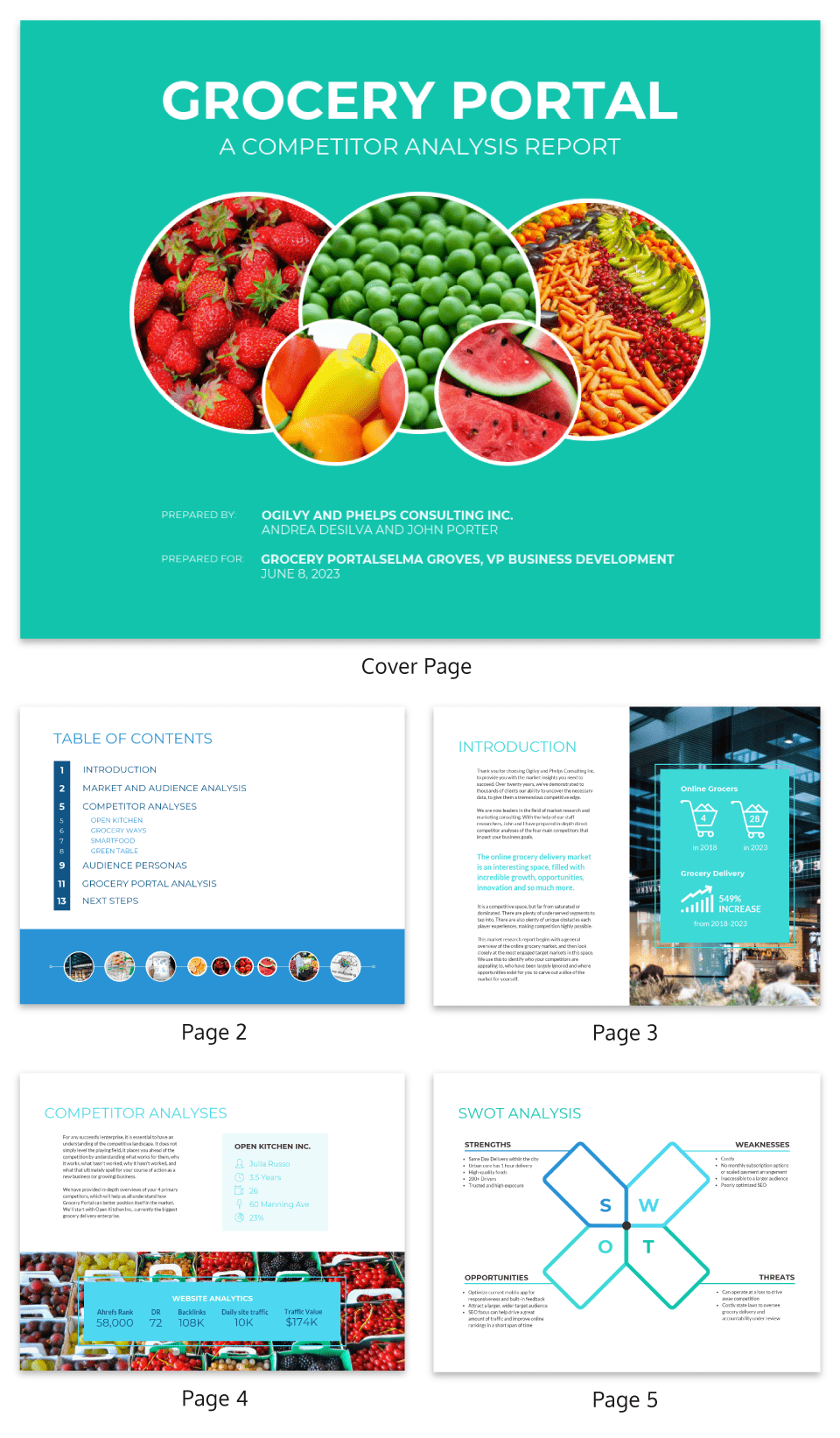
Whether you're a startup trying to break into the marketplace, a consultant trying to get results for your client, or an established company looking to cement your foothold against the competition, a well-researched competitive analysis gives you the tools you need to make strategic decisions.
Your competitive analysis should inform your marketing plan , your business plan , your consultant report and every part of your high-level business strategy.
But how do you actually create a competitive analysis report?
How to create a competitive analysis report (jump ahead to each section):
- Start with a competitor overview
- Conduct market research to uncover customer personas and industry trends
- Compare product features in a feature comparison matrix
- Summarize your strengths and weaknesses with a SWOT analysis
- Show where you fit in the competitive landscape
- Use a competitor analysis template for a professional look and feel
The level of detail you include in each section of your competitive analysis report will vary depending on the stage of your business growth and your goals. For example, a startup might create a report that focuses on market research, while an established business might dive into detail on an emerging competitor.
But let's talk about the parts of a competitive analysis that every report should include.
1. Start with a competitor overview
A strong report shows exactly what a company must out-compete to be successful.
Meaning you must audit any product or service that currently solves the problem your business is trying to solve for customers and write a quick profile for each competitor.
Like the template below, each competitor profile might include:
- The company's revenue and market share
- The company's size and information about their management team
- A broad description of the company's strengths and weaknesses
- An overview of how the company is perceived by customers
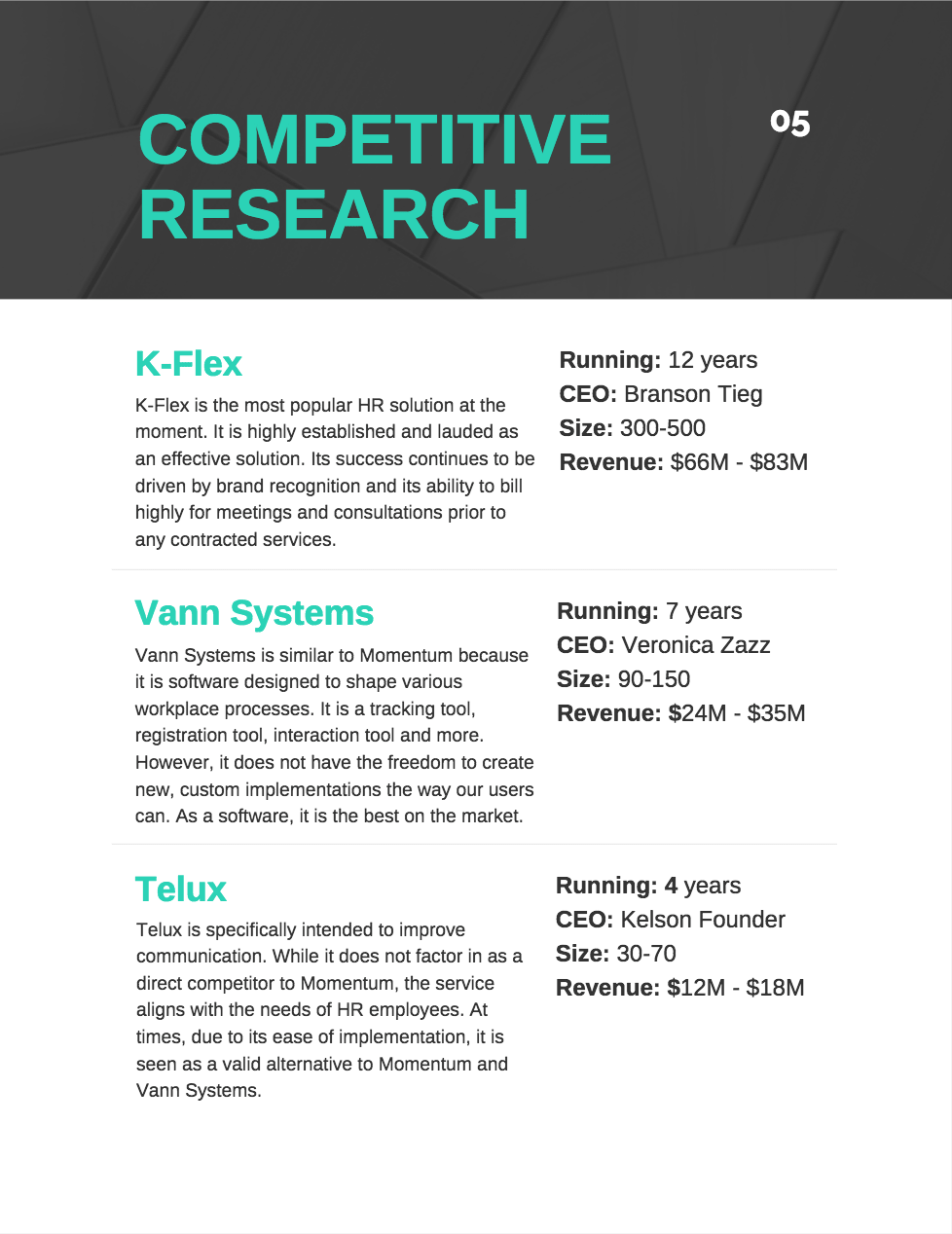
This overview will help your readers get a big-picture view of the market landscape.
2. Conduct market research to uncover customer personas and industry trends
You can't create a competitive analysis report without doing extensive market research, which is all about gathering information to understand your customers, identify opportunities to grow, and recognize trends in the industry.
This research can help you put together the customer personas that will guide business and marketing decisions down the line, and allow you to plan for any shifts that might disrupt the marketplace.
You can conduct primary market research, with:
- Customer interviews
- Online surveys or questionnaires
- In-person focus groups
- Purchasing a competitor product to study packaging and delivery experience
Or secondary market research, by:
- Reading company records
- Examining the current economic conditions
- Researching relevant technological developments
When assembling your market research you may just want provide a high-level summary of the industry trends, like this competitor analysis example shows:
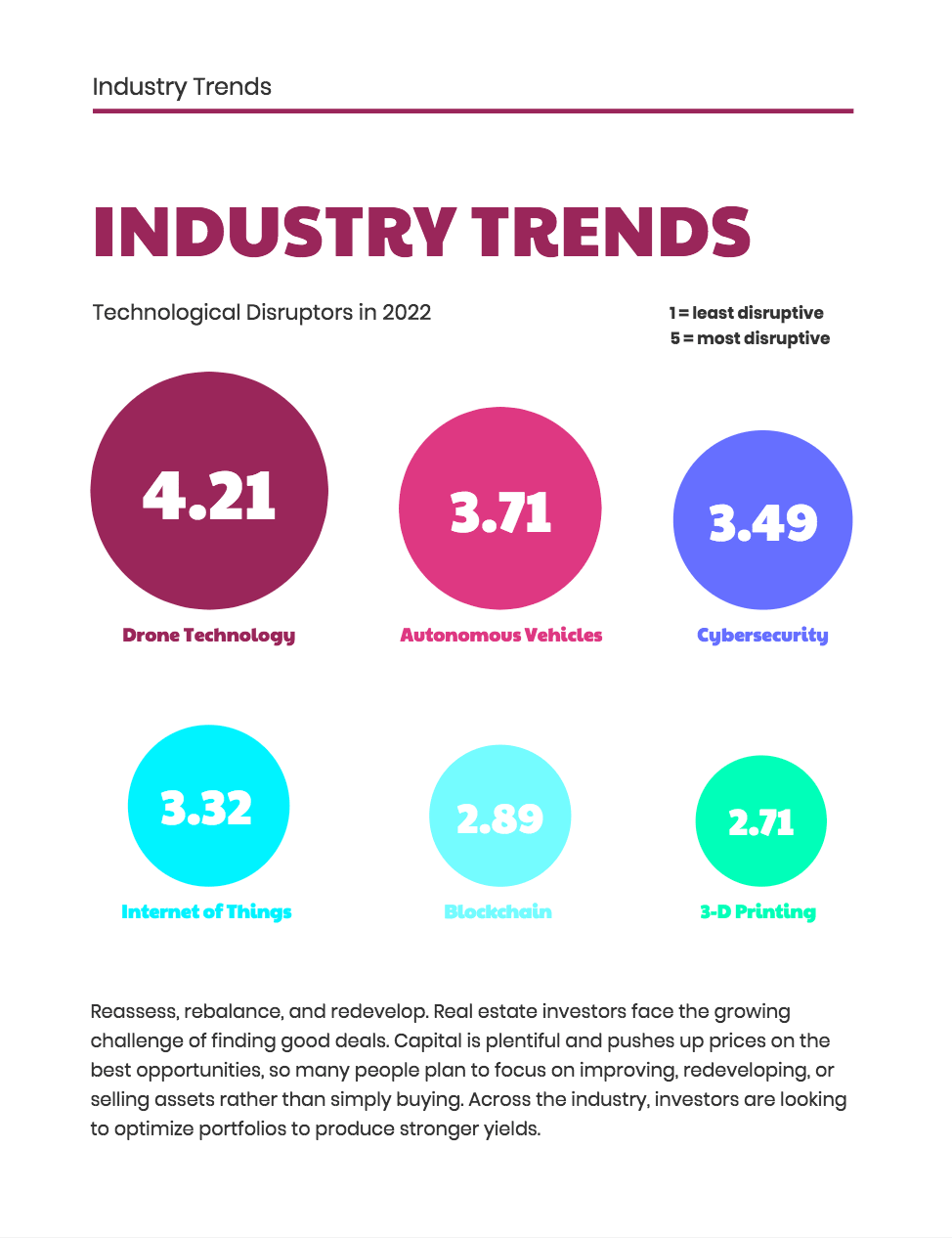
Or you may want to dive into detail on the demographics of a particular consumer segment, like this:
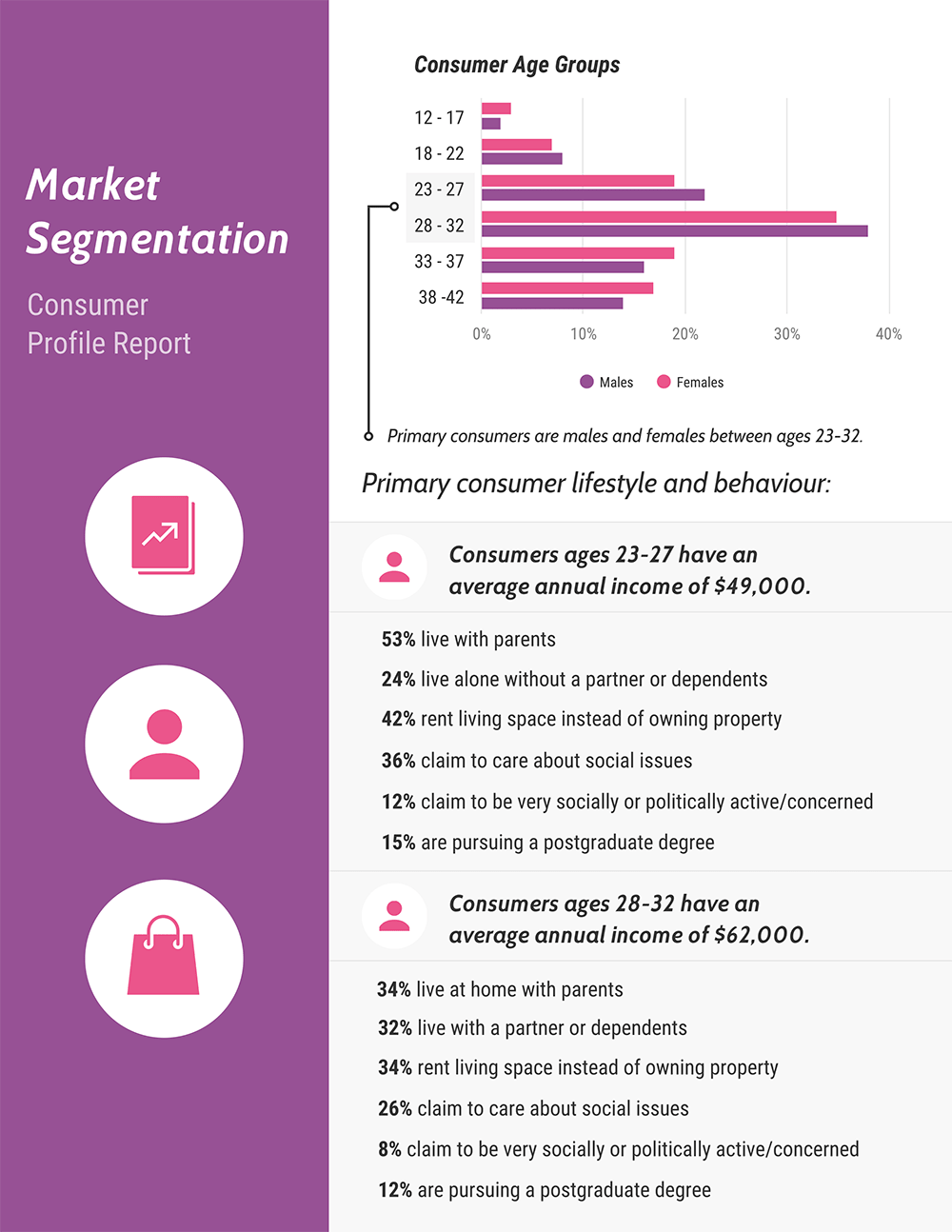
But if you're a consultant or advisor struggling to get buy-in from skeptical stakeholders, the report below would be ideal. Covering everything from market forecasts to consumer profiles, it can help you get clients and decision-makers on board.
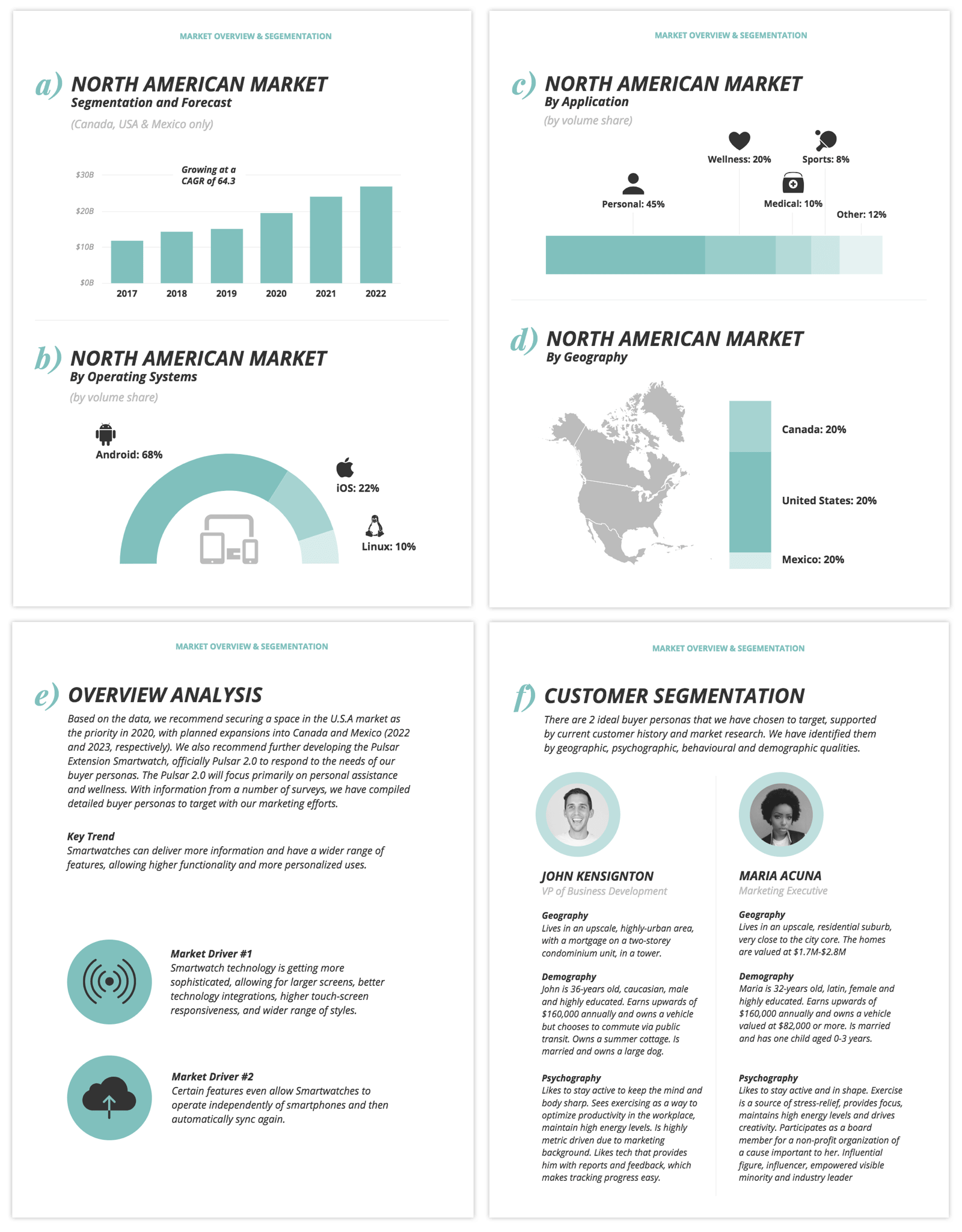
3. Compare product features in a feature comparison matrix
The feature comparison is arguably the most important part of the competitive analysis. Breaking down your product and your competitors' products feature-by-feature will allow you to see what really sets everyone apart.
In addition to specific product features, here are some attributes that you might include in a feature comparison matrix:
- Price
- Service
- Product quality
- Number of features
- Ease of use
- Warranties
- Customer support
- Brand/style/image
The most common format for a features analysis is a simple matrix with you and your competitors along one side and all of the relevant features along the other. You can check off or rate how you perform in each area:
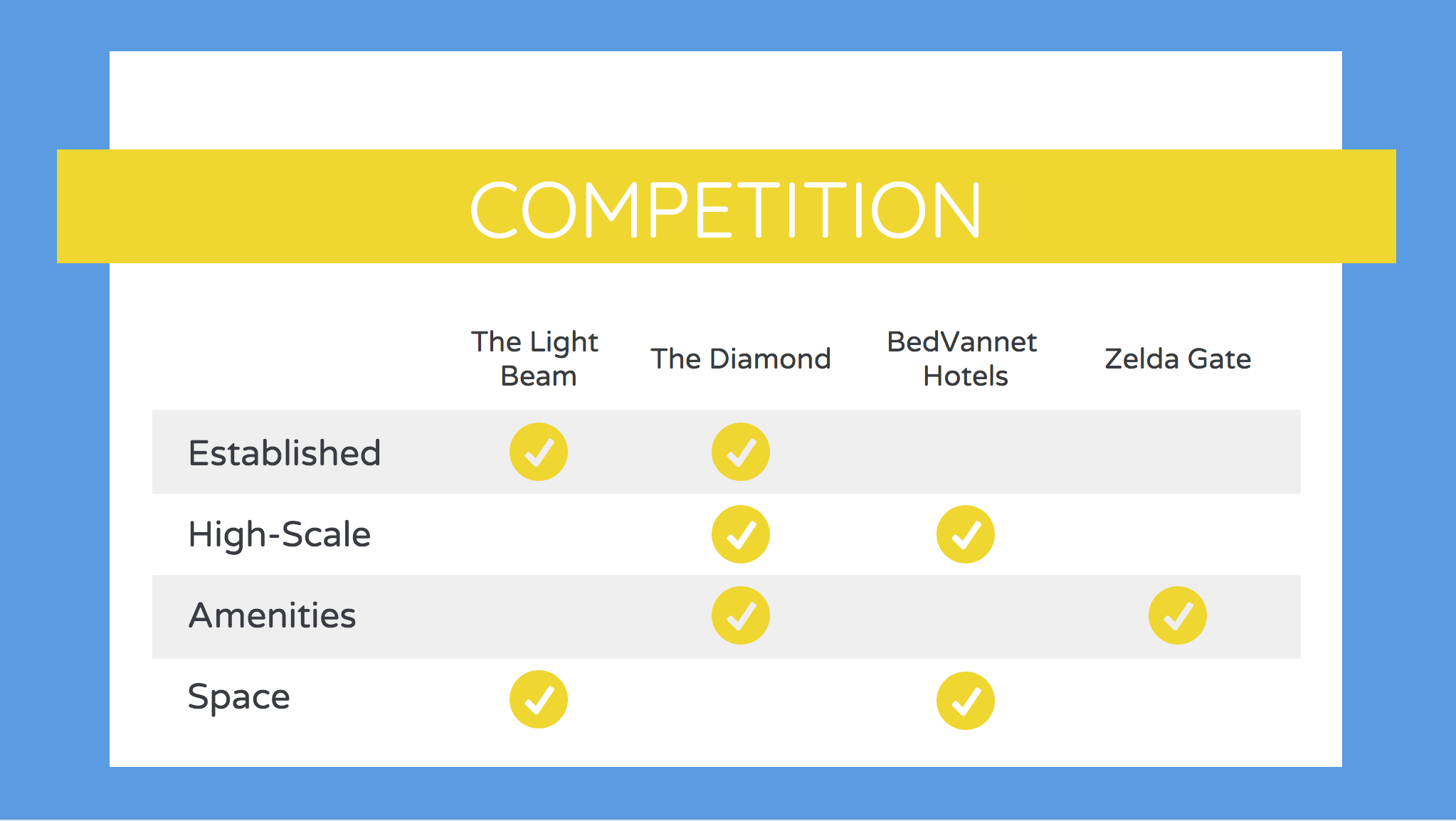
But these tables can get pretty long. Another approach is to focus on the things that provide the most value to the user, like in this competitor analysis example from Mint. It only includes ease of use, costs, and benefits:
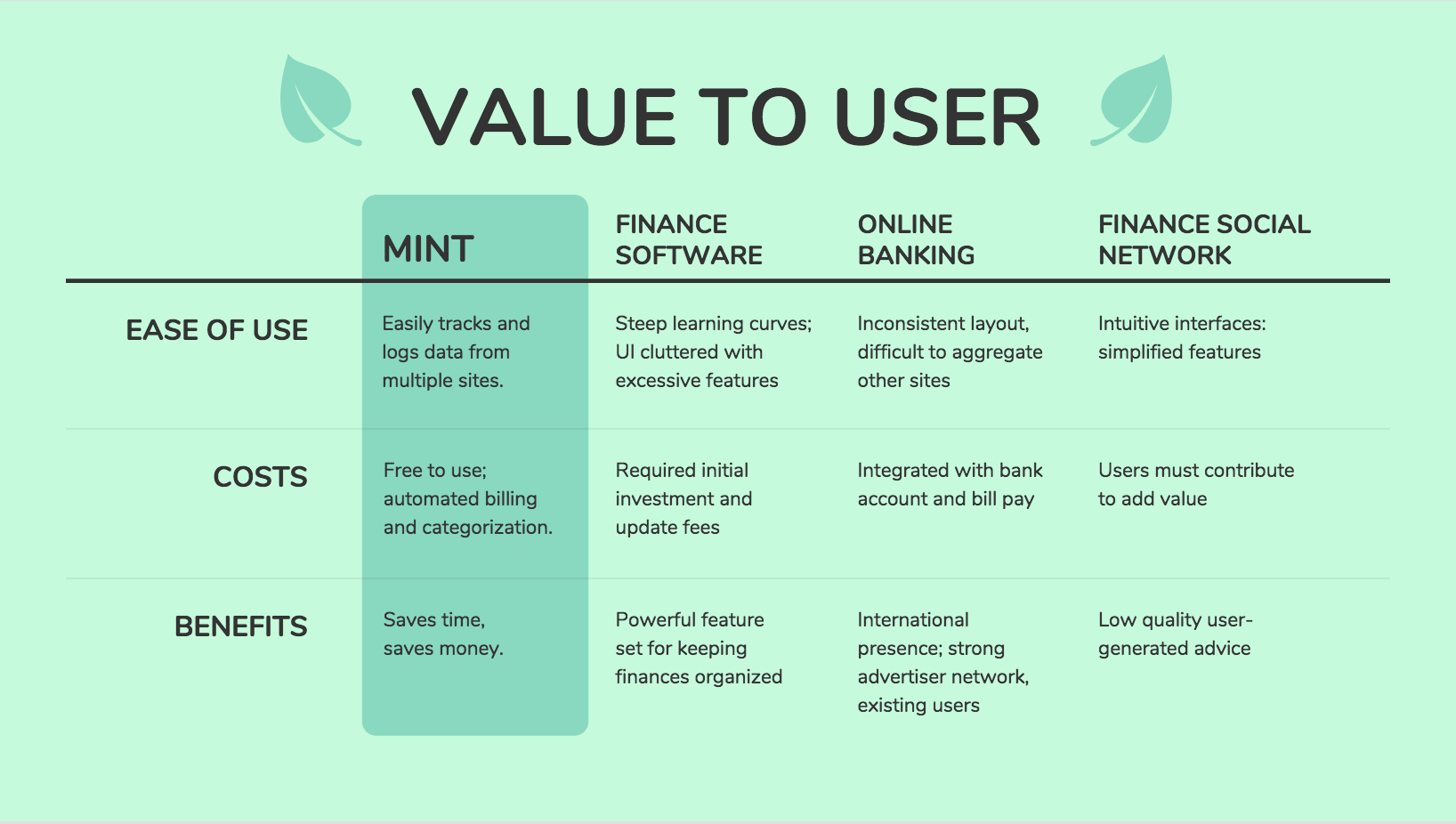
If you want to visualize your comparisons in an engaging way, you could use a comparison infographic.
Great resources for this section of your competitive analysis report are product rating sites like Capterra and G2Crowd . They'll give you an unbiased view of your company and your competitors.
And as with any market research, it's critical that you speak with real people who use your product and your competitors' products. That's the only way to get an accurate picture of how your target customers rate the competition.
4. Summarize your strengths and weaknesses in a SWOT analysis
When you're conducting research for your competitive analysis, it's going to be messy. You'll have a lot of data and it'll be hard for an outsider to understand.
That's what makes the SWOT analysis so essential.
A SWOT analysis is a framework for evaluating your competitive position by listing your key strengths, weaknesses, opportunities, and threats.
It can act like a short summary of the rest of your competitive analysis report for anyone who doesn't have time to dig into the details.
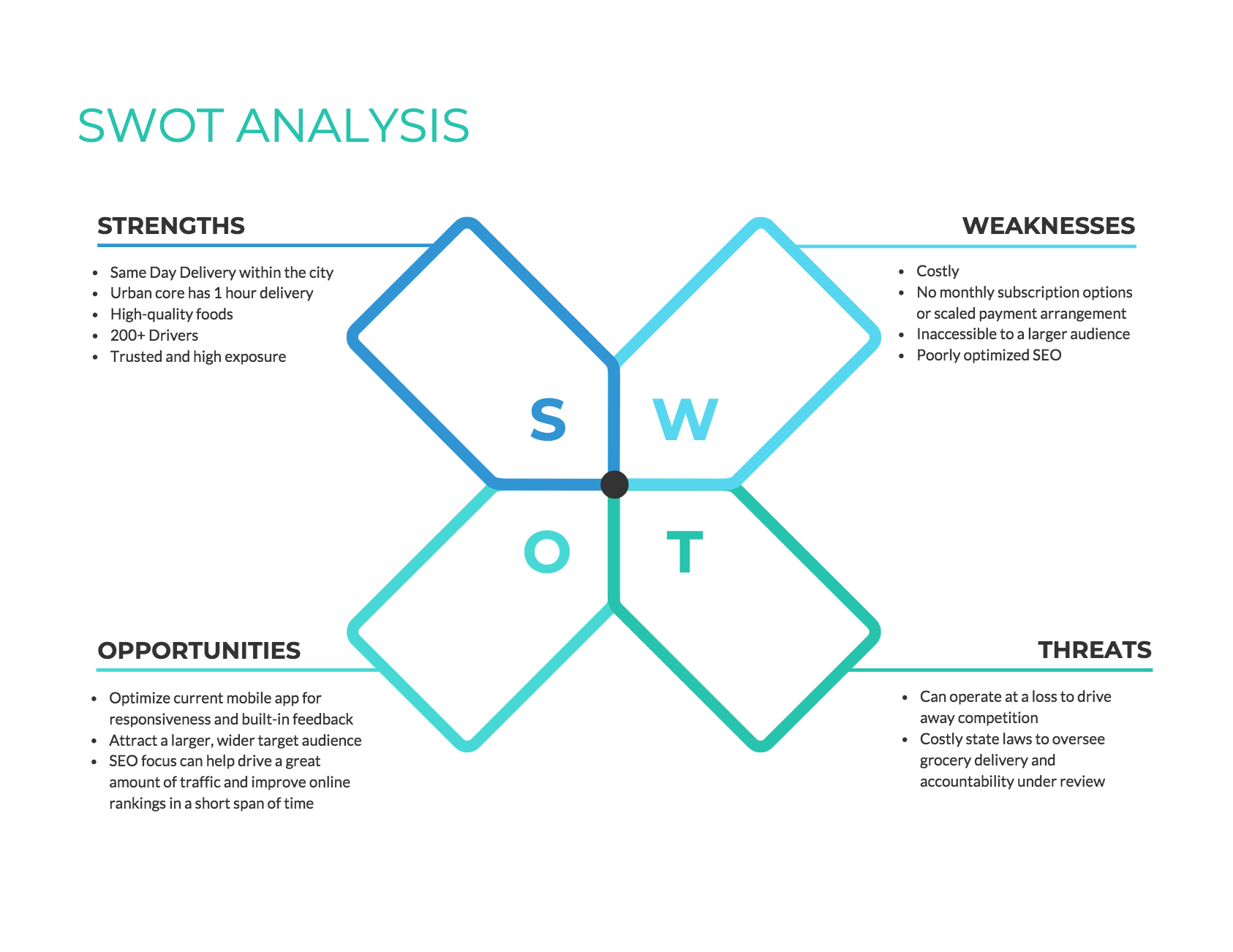
Click the template above to enter our online SWOT analysis maker tool. Customize the template to your liking–no design no-how required.
Here are some questions to kickstart your SWOT analysis:
- Strengths: What are we doing really well (in terms of marketing, products, sales, branding, technology, etc.)?
- Weaknesses: What are we struggling with? What's holding us back?
- Opportunities: What's the weakest area for our biggest competitor? Are there any gaps in the market that aren't current being addressed? What has recently changed in our business or the market?
- Threats: What is our biggest competitor doing much better than us? What new products/features are they working on? What problems aren't we currently addressing?
In your report, you could arrange your SWOT analysis in a simple list, but it can be helpful to use color-coded quadrants, like the competitor analysis example below. Note how each quadrant is paired with an icon:
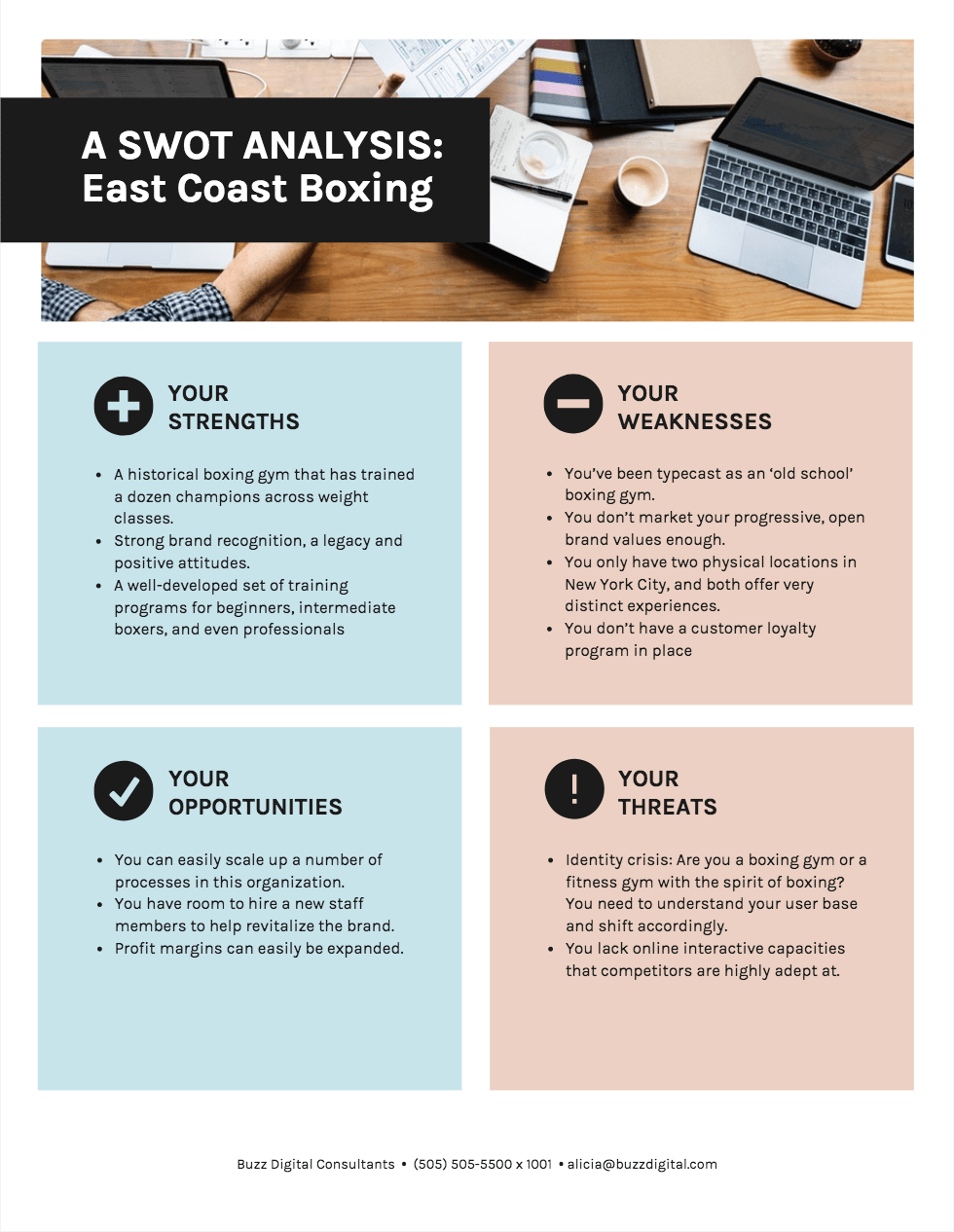
5. Show where you fit in the competitive landscape
After summarizing your strengths, weaknesses, opportunities, and threats, it's time to look at the bigger picture. It's time to figure out where every major competitor currently fits into the competitive landscape.
The most popular way of doing this is to identify the two dimensions that are most important for being competitive in your industry and plot them on a matrix, like this one from the Boston Consulting Group:
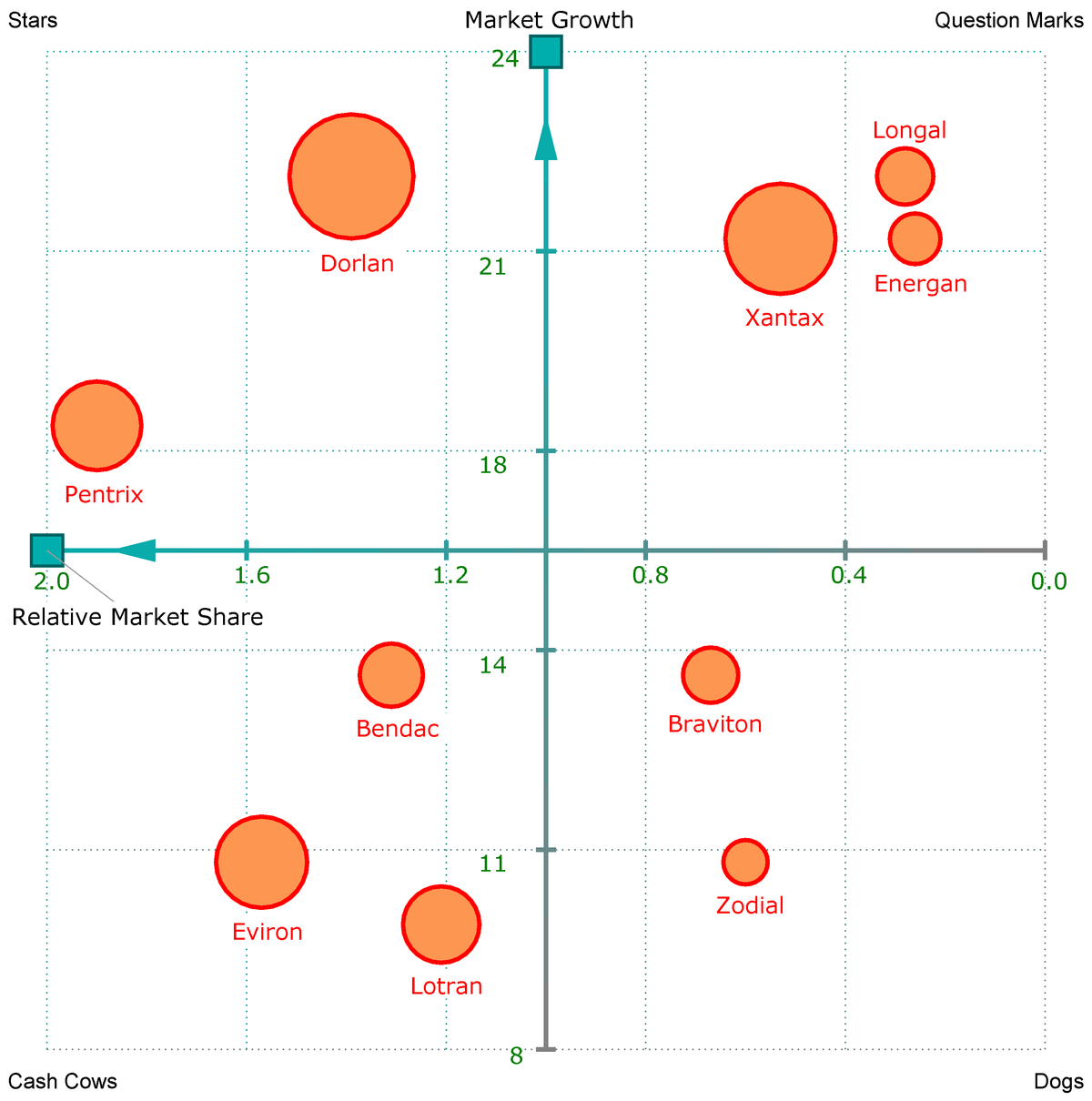
And this one from G2 Crowd (which looks at market presence and customer satisfaction):
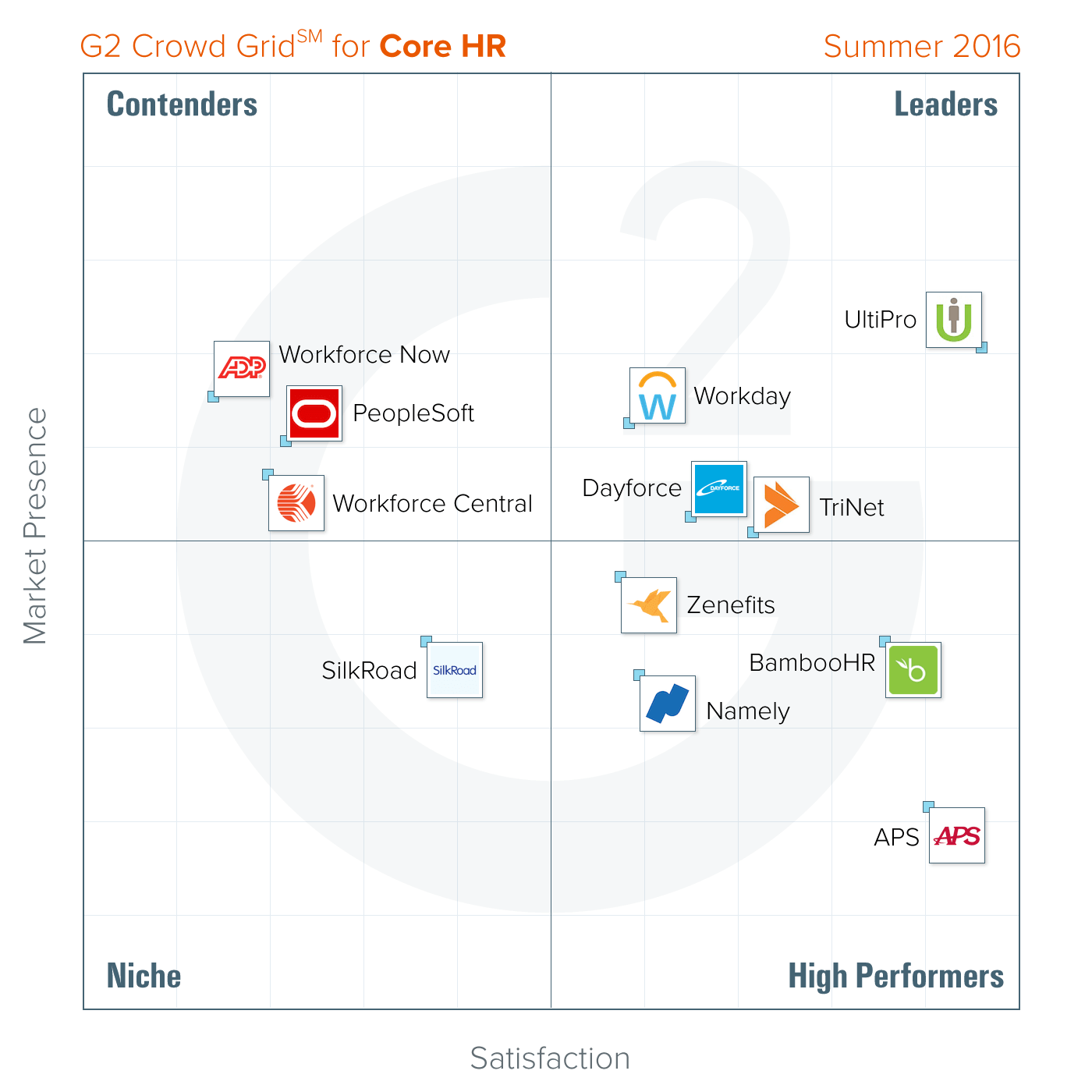
You may want to focus on where you fit in the market landscape based on your own biggest strengths and weaknesses, or the biggest threats and opportunities you identified in the SWOT analysis.
Or, it may be enough just to summarize in words the features and benefits that set your apart from your competitors (which is a great way to end your report on a high note).
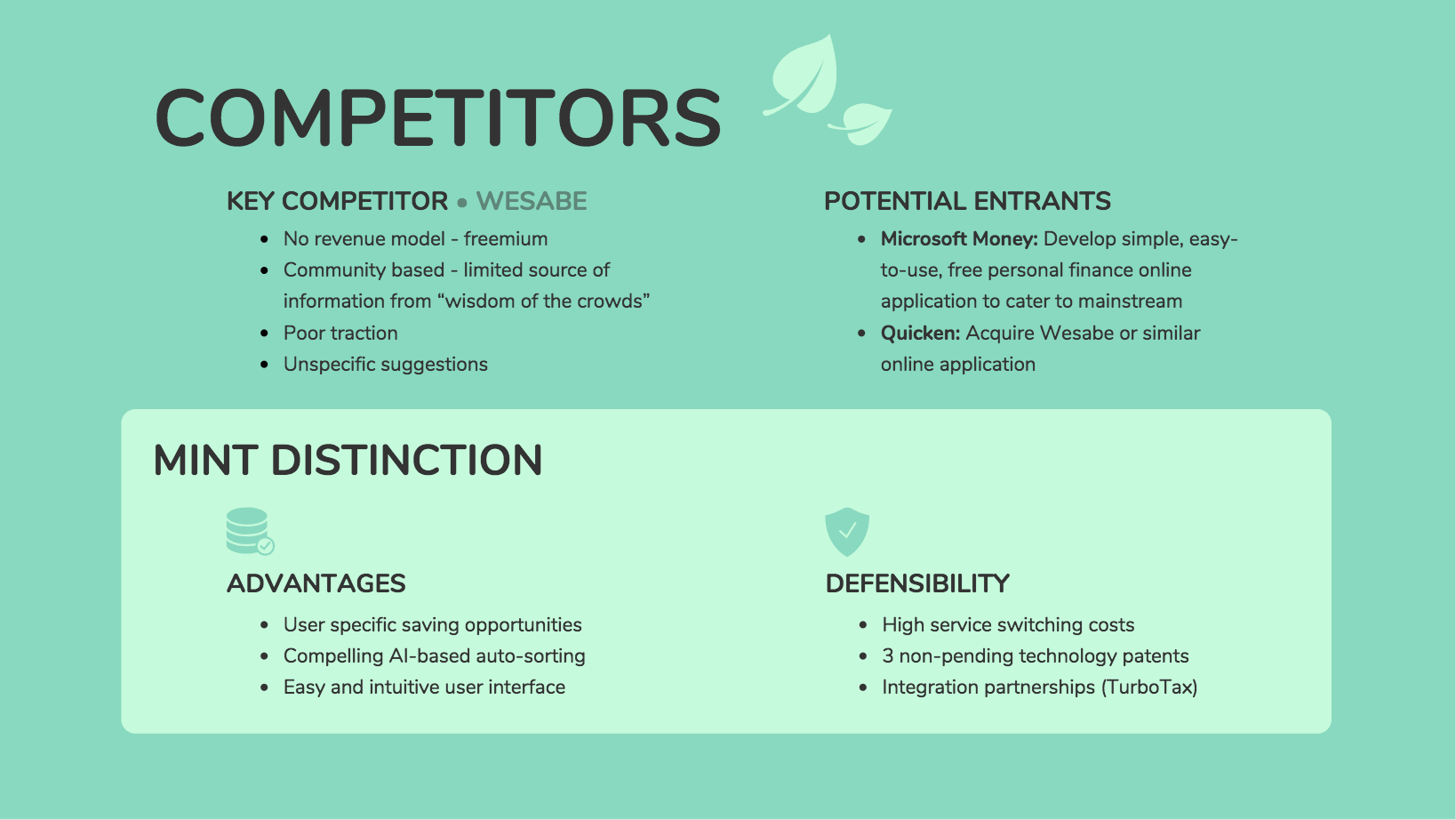
3 tips to improve your competitive analysis report design
How you design your competitive analysis report can have a significant impact on your business success. The right report design can inspire stakeholders to take action based on your findings, while a mediocre design may reflect poorly on your hard work.
Here are a few report design best practices to keep in mind when designing your competitive analysis report:
- Start with a competitive analysis report template
- Keep core design elements like colors and fonts consistent
- Use visuals to summarize important information and keep your audience engaged
1. Start with a competitor analysis template
The quickest way to lose the confidence of your stakeholders is to present a messy, amateur report design. Besides distracting from the content of the report, it might even put your credibility at risk.
Starting with a pre-designed competitor analysis template, like the one below, takes almost all of the design work out of the mix so you can focus on the content (while still impressing your stakeholders).
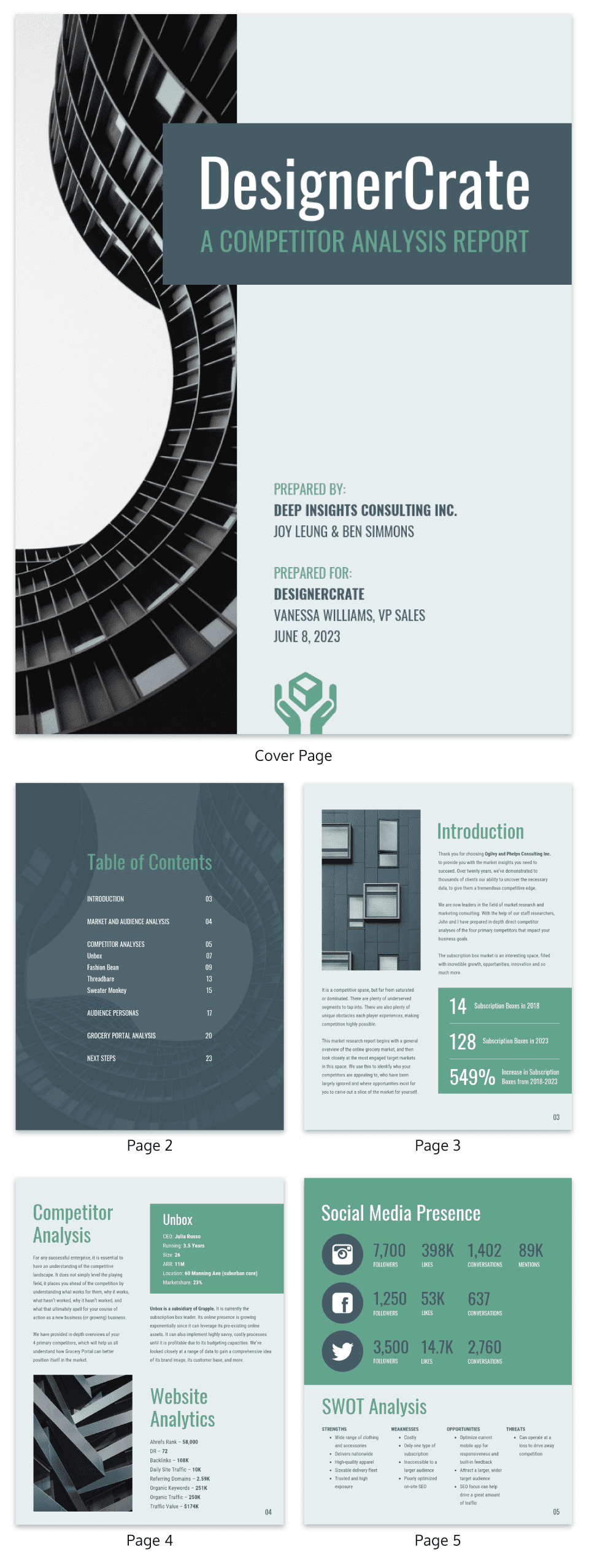
And if you're a consultant competing for a project, a pre-designed template may just give you the edge you need to land that client.
Click on any of our templates; you'll enter our online drag and drop report maker tool. No design know-how required.
2. Keep core design elements like colors and fonts consistent
If you take a look at the competitor analysis template below, you might notice that the designer has switched up the layout from page to page, but many of the other design elements are kept consistent.
That consistency helps the report design feel cohesive while making it easier for readers to quickly skim for key pieces of information.
Here are a few quick guidelines for keeping important design elements consistent:
- Use the same color scheme throughout your report (with one highlight color to draw attention to key takeaways and important numbers)
- Use the same font styles for your headers, subheaders, and body text (with no more than 2-3 font styles per report)
- Use the same style of visuals throughout your report (like flat icons or illustrated icons… but not both)
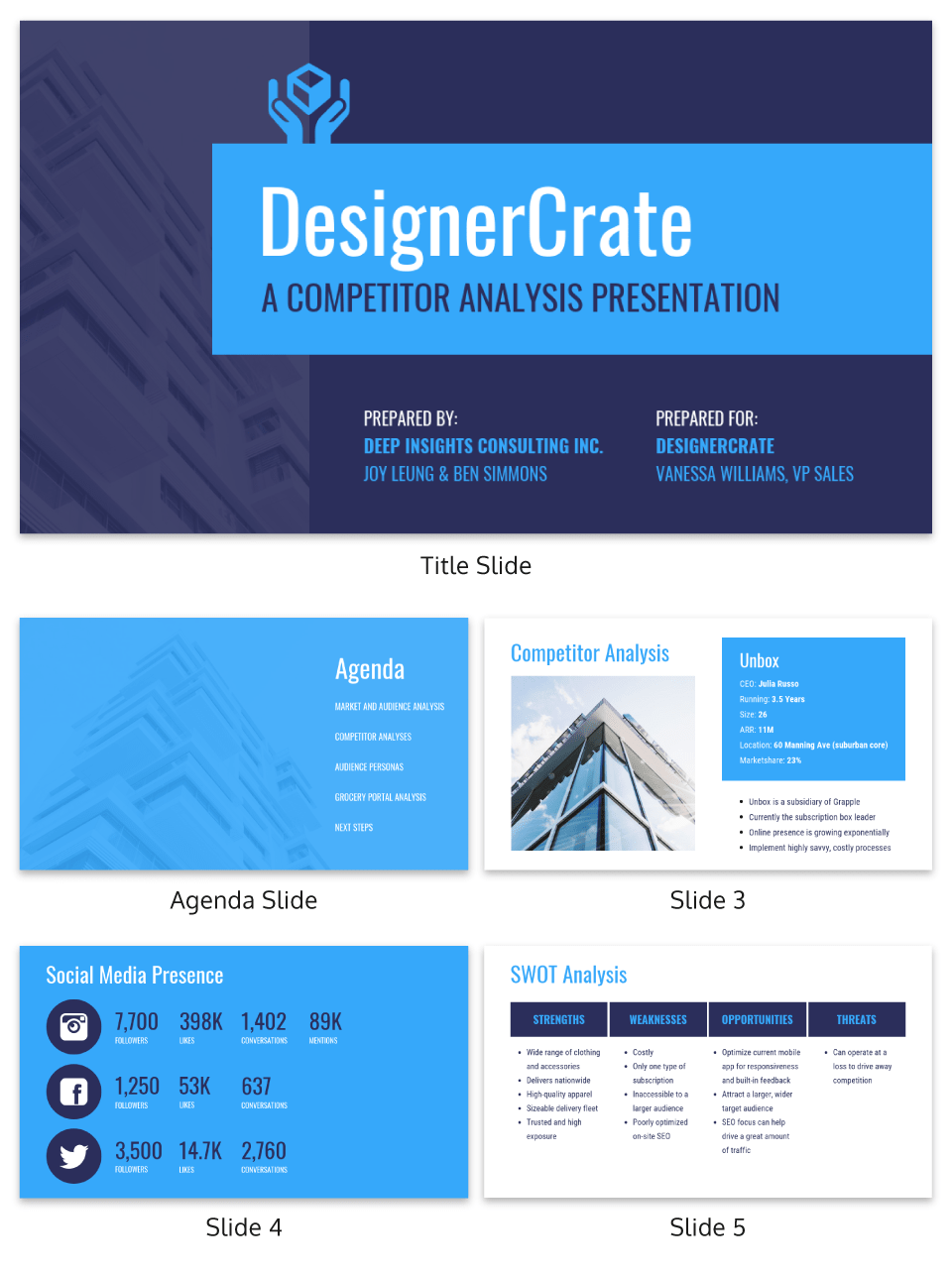
3. Use visuals to summarize important information and keep your audience engaged
The challenge with a competitive analysis report is that you collect heaps of background research, and you have to condense it into a brief report that your client will actually read.
And written summaries will only get you so far.
Visuals like charts and tables are a much better way to communicate a lot of research quickly and concisely, as seen in the market research summary below.
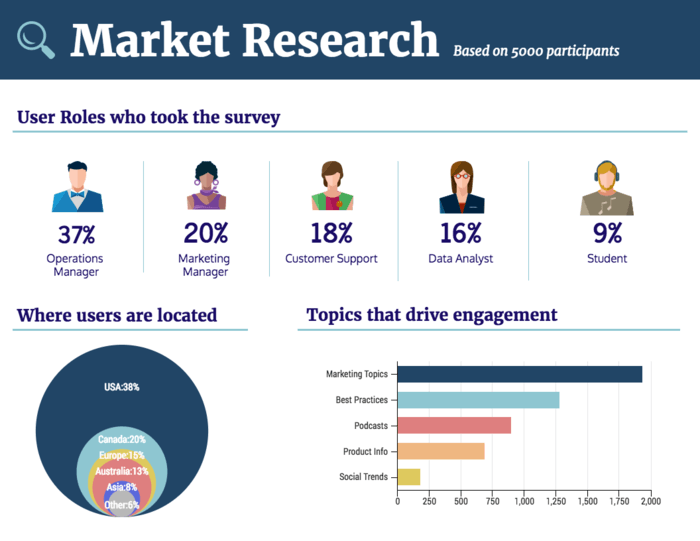
Even lists can be made more engaging and informative by spacing out list items and giving more emphasis to headers:
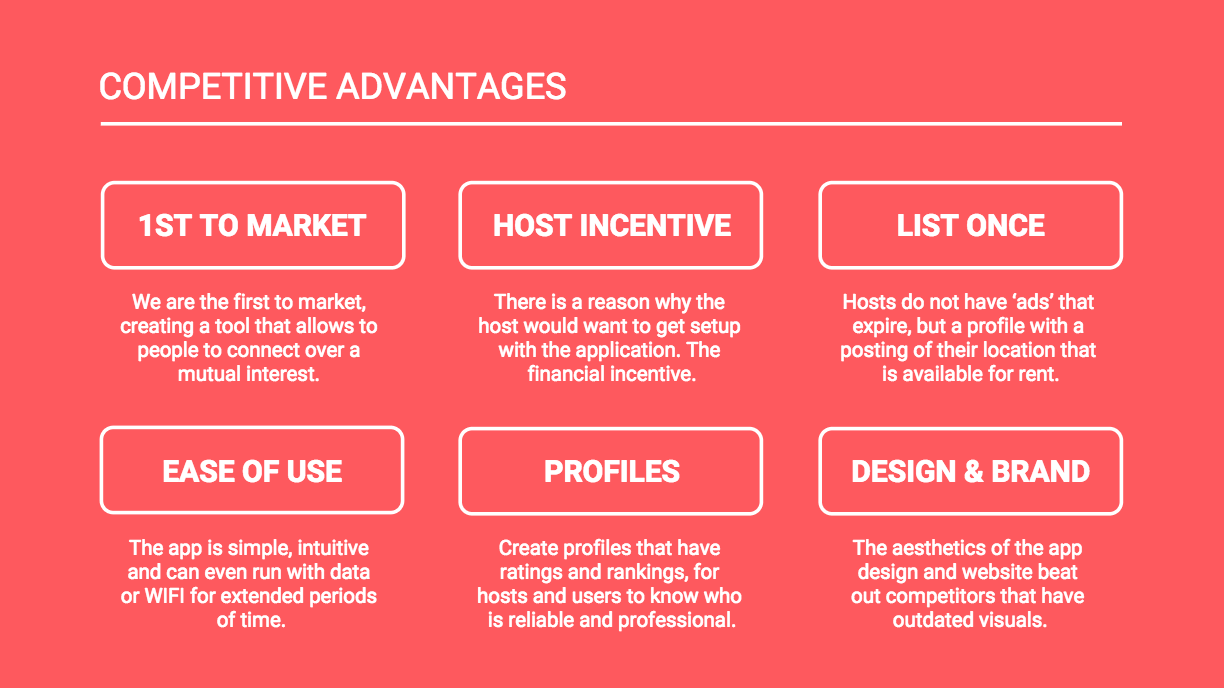
The more you can replace descriptive paragraphs and long lists with thoughtful visuals, the more your readers will thank you.
Conclusion
A competitive analysis will allow you to think up effective strategies to battle your competition and establish yourself in your target market.
And a report that communicates the findings of your competitive analysis will ensure stakeholders are on board and in the know.
Now that you know how to design a competitive analysis report, you're ready to get started:
How To Create A Market Analysis Report
Source: https://venngage.com/blog/competitor-analysis-template/
Posted by: milsapmustrien.blogspot.com

0 Response to "How To Create A Market Analysis Report"
Post a Comment